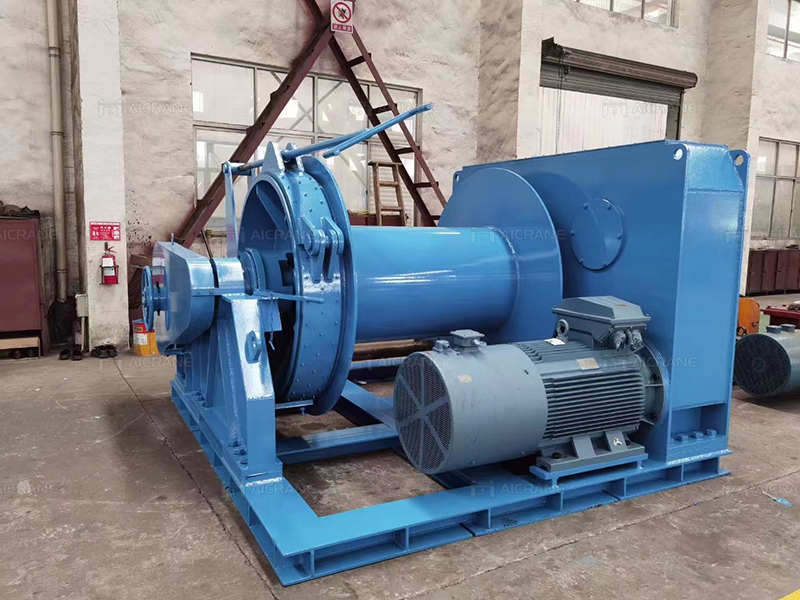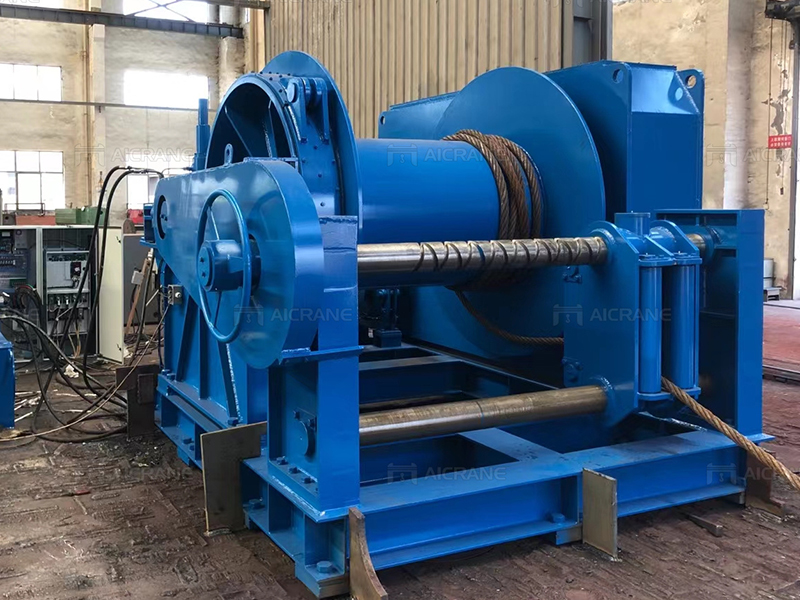In the ever-evolving maritime industry, the need for efficiency, safety, and environmental responsibility is ever-present. One technology that has gained prominence in recent years is the electric mooring winch, lauded for its precision, reduced maintenance, and eco-friendliness. But what about existing vessels, the workhorses of the seas? Can these vessels, many of which are still powered by traditional systems, be retrofitted with electric mooring winches? In this article, we’ll explore the transformative potential of retrofitting electric mooring winches onto existing vessels, delving into the benefits, challenges, and the process involved in this upgrade.

The Case for Electric Mooring Winches
Electric mooring winches have become increasingly popular in the maritime industry due to their numerous advantages over traditional hydraulic systems. These advantages include:
Precision Control: Electric mooring winches offer precise control over the tension and positioning of mooring lines and cables. This level of control is essential for the safe and efficient docking and anchoring of vessels.
Reduced Manual Labor: Electric winches significantly reduce the need for manual labor during mooring operations. This not only enhances efficiency but also reduces the risk of accidents and injuries associated with manual handling.
Lower Maintenance Requirements: Electric mooring winches are known for their lower maintenance needs compared to hydraulic winches. They have fewer moving parts and do not require hydraulic fluid, reducing the potential for fluid leaks and related maintenance.
Environmentally Friendly: Electric winches are cleaner and more environmentally friendly than hydraulic systems, as they do not produce hydraulic fluid leaks that can harm the marine ecosystem. This aligns with the industry’s increasing focus on sustainability and reduced environmental impact.
Considering these advantages, it’s clear why operators of existing vessels might consider retrofitting their equipment with electric mooring winches to reap the benefits.
The Retrofitting Process of Electric Mooring Winches
Retrofitting electric mooring winches onto existing vessels is a complex and meticulous process that requires careful planning and execution. Here is an overview of the steps involved:
Vessel Assessment: The first step is to conduct a thorough assessment of the existing vessel’s structure, capacity, and electrical systems. This assessment will determine whether the vessel can accommodate the installation of electric mooring winches and what modifications, if any, are required.
Engineering Design: Once the vessel’s suitability is confirmed, engineers will design a retrofit plan that includes the placement and integration of electric mooring winches. The design must meet safety and regulatory standards and consider the vessel’s specific needs.
Winch Selection: The selection of the appropriate electric mooring winch is crucial. Factors such as the vessel’s size, intended use, and load-bearing requirements will influence the choice of winch. It’s essential to consult with winch manufacturers and marine engineering experts to make the right selection.

Structural Modifications: Depending on the vessel’s design and layout, structural modifications may be required to accommodate the electric winches. These modifications can include reinforcing deck structures, creating mounting points, and ensuring proper weight distribution.
Electrical System Upgrade: Electric mooring winches require an electrical power source. In many cases, existing vessels may need an upgrade to their electrical systems to support the new winches. This may include installing larger generators, updating wiring, and ensuring the proper voltage and amperage requirements are met.
Installation: The installation of mooring winches is a meticulous process that involves mounting the winches on the vessel’s structure and connecting them to the electrical system. This should be carried out by experienced technicians to ensure proper installation and alignment.
Safety and Regulatory Compliance: After installation, the retrofit must undergo thorough safety and compliance checks to ensure that it meets maritime regulations and industry standards. These checks may include load testing, electrical system assessments, and safety inspections.
Training and Familiarization: Crew members should receive training and familiarization on the operation and maintenance of the new electric mooring winches to ensure safe and efficient usage.
Benefits of Retrofitting Electric Mooring Winches
Enhanced Safety: Retrofitting electric mooring winches can significantly enhance safety during mooring and anchoring operations. The precise control offered by electric winches reduces the risk of accidents and vessel damage.
Increased Efficiency: Electric winches streamline mooring operations, reducing the time and effort required to secure a vessel. This efficiency can lead to quicker turnaround times in ports and increased operational productivity.
Lower Maintenance Costs: Electric mooring winches have fewer moving parts and are less prone to leaks, reducing maintenance costs in the long run. This cost savings can be a compelling reason to retrofit.
Environmental Responsibility: The maritime industry is increasingly focused on environmental responsibility. Retrofitting with electric mooring winches helps reduce the environmental impact by eliminating hydraulic fluid leaks and emissions associated with hydraulic systems.
Challenges and Considerations
While retrofitting electric mooring winches onto existing vessels is a promising endeavor, there are challenges and considerations to keep in mind:
Costs: Retrofitting can be a significant investment, encompassing expenses for winch purchase, installation, electrical system upgrades, and structural modifications. Vessel operators need to weigh these costs against the anticipated benefits.
Compatibility: Not all vessels are suitable for retrofitting with electric mooring winches. Compatibility depends on the vessel’s structure, electrical systems, and intended use. Some older vessels may not be ideal candidates for retrofitting.
Downtime: Retrofitting involves taking the vessel out of operation for a period, which can result in downtime and loss of revenue. Careful planning and scheduling are necessary to minimize the impact of this downtime.
Regulatory Compliance: Retrofitting must adhere to maritime regulations and safety standards. Ensuring compliance is a critical consideration throughout the process.
Crew Training: Crew members will need training to operate and maintain the new electric winches safely and effectively. Adequate training should be budgeted for and considered during the retrofitting process.
Conclusion
Retrofitting existing vessels with electric mooring winches is a transformative upgrade that can enhance safety, efficiency, and environmental responsibility in the maritime industry. While the process is complex and requires careful planning, the benefits in terms of precision control, reduced manual labor, lower maintenance costs, and sustainability can make the investment worthwhile.
As the maritime industry continues to evolve and prioritize eco-friendly practices, retrofitting existing vessels with electric mooring winches represents a proactive step toward modernization and compliance with industry standards. It is a testament to the adaptability of existing vessels to embrace new technologies and contribute to a more sustainable and efficient maritime sector.